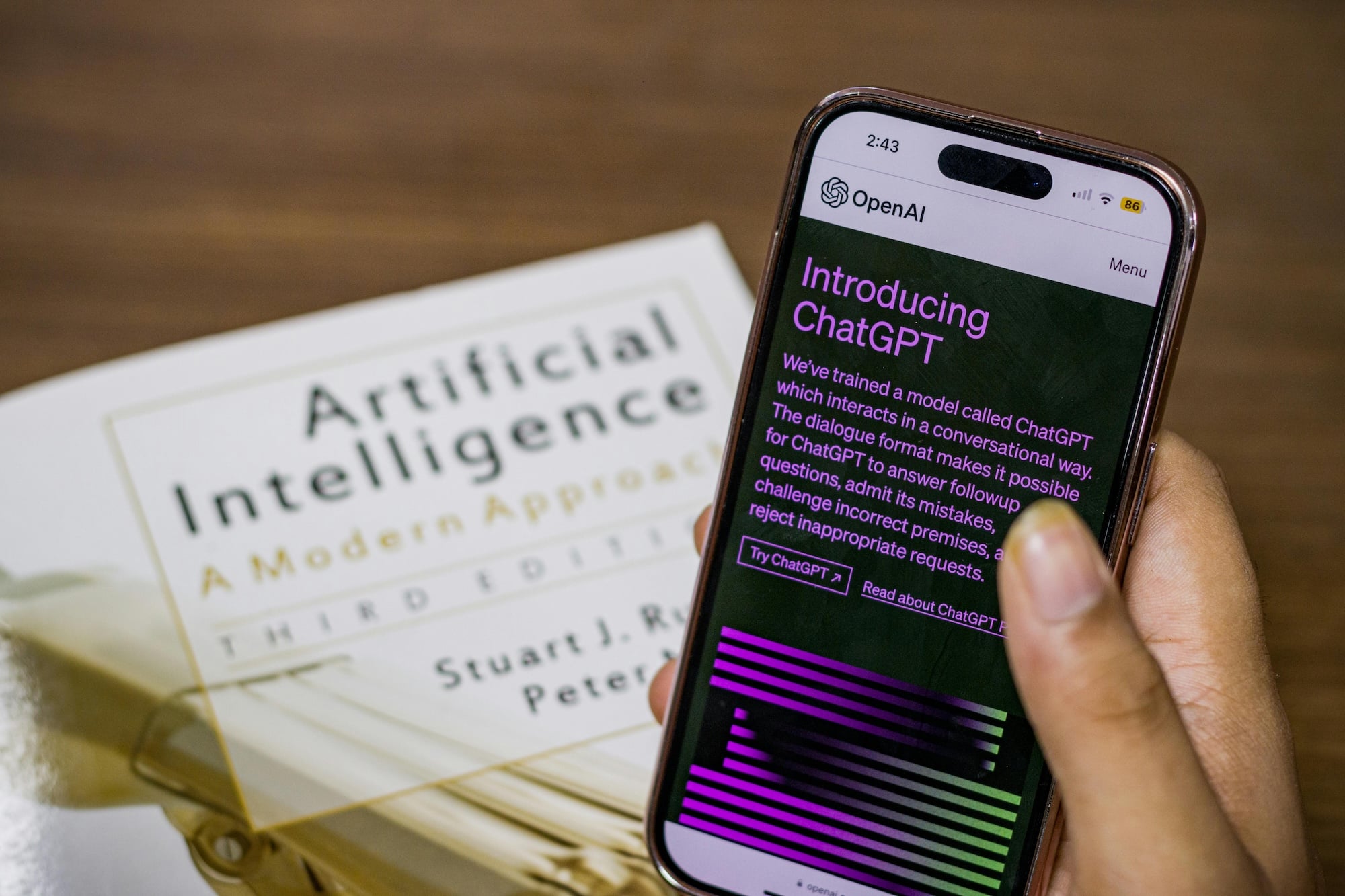Content generation tools are gaining popularity not only in the marketing community. Entrepreneurs who want to acquire texts for their websites more quickly and cheaply are using them as well. But why might it not always be worth it?
ChatGPT has become one of the most popular tools for content creation, although, as I mentioned in another blog post, the OpenAI tool was not created for generating texts. However, it quickly gained many fans, mainly due to the time saved in content creation and the money saved that would have been paid to specialists. Unfortunately, this tool also saves on quality, which is noticeable even after minor editing and correction.
Table of contents
What dangers do I see?
A lot of junk content and a lack of very important fact-checking. The internet being flooded with rehashed texts seems inevitable. Among those working on this content are users verifying what they generated. However, there are also those who publish it without reading. The materials created by tools usually look very similar, have a similar layout, and sound “encyclopedic.”
After generating and refining the text, it may turn out that writing an article from scratch will be more cost-effective. The style is also important, as every copywriter has their own flair which distinguishes them. ChatGPT and other tools also have their style, which I recognize immediately. I wrote about this in the article “Useful content, or creating content for users.”
There is one more significant danger. Writing this text (September 2023), I know it’s hard to respond to accusations concerning creating content with AI. I speak from my own experience, having been accused that a text sent to a client was generated by ChatGPT. And although we worked on the project for over a year, the accusation came with one of the last implementations.
After asking how it was determined that the text was generated by AI and presenting five different results from verification tools, I received no definitive answer. One tool showed that the text was 100% created by a human, another indicated that the same text was 80% generated using AI. Three other tools showed random results. This is very dangerous because it can quickly ruin the reputation of a good copywriter. Especially if neither they nor anyone from their team generates content with tools.
ChatGPT made its debut in late November 2022. We discussed its impact on the copywriting industry and more with Piotr Kaleta (formerly associated with the company x-kom) in the marketing podcast episode “About advertising on the internet: for whom, how much, and why?“.
What does Google say about it?
Google officially doesn’t communicate whether content generated by tools such as ChatGPT is okay, nor does it say that one should avoid them. On one hand, the official guidelines stating that “content should be created by people for people” disappeared, replaced by “content should be created for people.” On the other hand, John Muller reminds us that rewritten content is not treated as unique.
How did we recover it from google update? This is niche site and traffic totally dropped..
Experts help us to recover it from hit..
— Muhammad Rizwan (@Rizwan_Space) September 23, 2023
This seems like the same information that lots of other sites have, and a lot of rewritten content. What’s the unique value to the web & to our users that I’m missing?
— Hey John, Your profile caught my eye. Ouch. (@JohnMu) September 16, 2023
I asked Piotr Kaleta, a guest on the podcast episode, for his comment: “In my opinion, the current duality is confusing. A state of double standards. A phenomenon where the desire to save time and effort can lead to a domain being filled with duplicates. From the perspective of someone providing content, we have a stalemate situation. Which information should be relied upon? Should one risk using ChatGPT, only to find out later that it compromised earlier achievements seen in Google Search Console? Then, who is responsible for choosing such solutions? Unfortunately, we have too little data and case studies to make firm theses.”
I haven’t found case studies about the successes of websites that publish content generated solely by ChatGPT and similar tools. However, it’s worth looking into articles in English and German discussing minor troubles related to the use of artificial intelligence. Read:
https://www.seroundtable.com/google-compilation-chatgpt-output-content-36055.html
The human factor
People I work with pay for text written by humans. I do the same. Although it’s easy to enter a command for DALL-E to generate an image, I still use the services of a graphic designer. I also continue to work with programmers who will create the needed piece of code.
What if a client wishes to use content generation tools? We can use them, though so far, we have occasionally refused. In case of collaboration, we might ask for written information that the client is aware of the potential lack of results, and we as PiotrPolok.pl don’t take responsibility for what happens in the future.
I’m not saying to never use these tools. Just be cautious and verify the “ready-mades” they produce. Especially when entering a command to create text based on another or simply rewording it. Such actions could lead to legal consequences (text theft/plagiarism) in the future, and Google could remove the site from search results or drastically lower its visibility.
Respect for the audience
And finally, perhaps the most important point. Both I and every copywriter on the PiotrPolok.pl team create content independently. We want to maintain human contact despite often communicating through the internet. We are aware of how irritating it can be to talk to a robot on a helpline or chat, let alone reading advice and tips prepared by a robot based on information obtained from a human.



